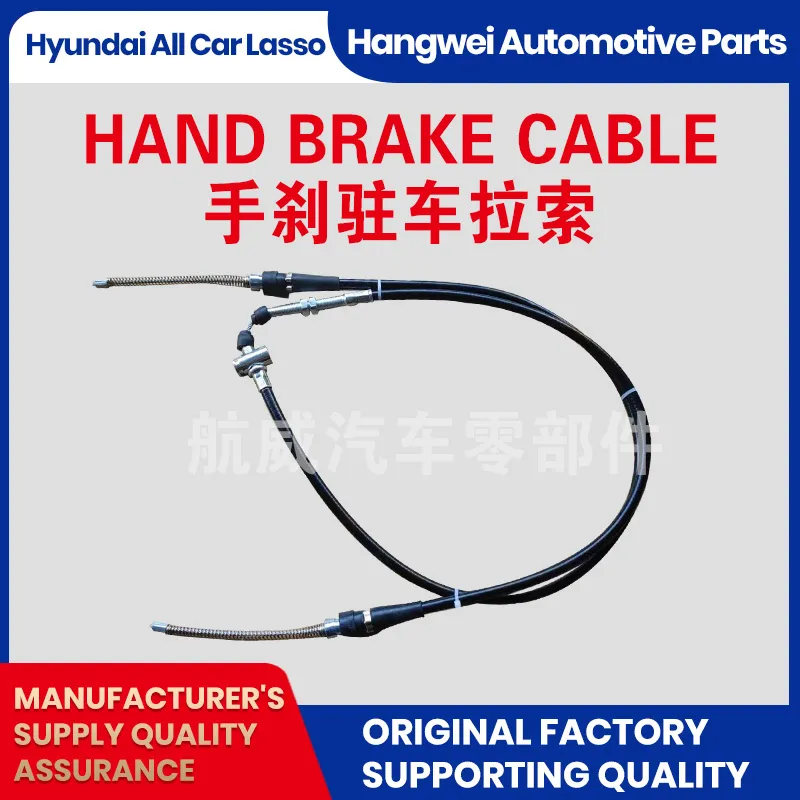throttle wire
Understanding Throttle Wire Its Importance and Functionality in Modern Vehicles
Throttle wire plays a crucial role in the functionality of vehicles, especially in controlling the engine’s power output. As vehicles have evolved over the years, so too have the mechanisms that regulate engine performance. While many modern vehicles now utilize electronic throttle control (ETC), the traditional throttle wire system remains a fundamental component in numerous older and simpler vehicle designs. In this article, we will explore what throttle wire is, its functionality, and its significance in the automotive industry.
What is Throttle Wire?
Throttle wire, also known as the throttle cable, connects the accelerator pedal to the throttle body in an internal combustion engine. When a driver presses the accelerator pedal, the throttle wire transmits this action to the throttle body, which regulates the amount of air entering the engine. This change in air intake directly affects the engine's power output and, consequently, the vehicle's speed.
The throttle wire system comprises several components, including the accelerator pedal, the throttle cable, and the throttle body itself. The accelerator pedal operates a lever that pulls the throttle wire, which in turn opens the throttle body to allow more air into the engine. The simplicity of this mechanical connection is one of the reasons why throttle wires have been widely used in automotive design for decades.
Functionality of Throttle Wire
The primary function of the throttle wire is to facilitate communication between the driver and the engine. When a driver accelerates, the tension in the throttle wire increases, causing the throttle plate to open. This opening allows more air into the combustion chamber, increasing engine power and speed.
The responsiveness of the throttle wire system is critical for driving performance. A well-maintained throttle wire provides precise control over engine output, allowing for smooth accelerations and decelerations. Conversely, a worn or frayed throttle wire can lead to erratic engine behavior, including delayed acceleration or stalling. Regular maintenance and checks are therefore essential to ensure optimal functionality.
throttle wire

Advantages of Throttle Wire Systems
Despite the emergence of electronic throttle control systems, throttle wires carry several advantages. One of the primary benefits is the mechanical simplicity and reliability of the system. A throttle wire does not rely on electronic sensors or complex software to function, making it less susceptible to failures due to electrical problems. This can be particularly beneficial in older vehicles or in areas where electronic components may be prone to damage or malfunction.
Moreover, throttle wire systems are generally easier and cheaper to repair or replace than their electronic counterparts. Technicians can diagnose and fix issues with the throttle wire by visually inspecting the cable and its connections, leading to quicker turnaround times in repairs.
The Transition to Electronic Throttle Control
While throttle wires have served vehicles well, the automotive industry is gradually moving towards electronic throttle control systems. ETC offers several advantages, including better fuel efficiency, reduced emissions, and enhanced performance. Furthermore, electronic systems can incorporate advanced safety features, such as traction control and stability management, which are becoming increasingly important in modern vehicle design.
Nevertheless, understanding throttle wire systems is essential, especially for vintage car enthusiasts or those who work on older vehicles. Knowledge of how these mechanical systems operate is crucial for maintaining optimal engine performance and ensuring an enjoyable driving experience.
Conclusion
Throttle wire, though seemingly simplistic, is a vital component in the functioning of many vehicles. Its ability to translate driver input into engine power output is fundamental to smooth and responsive driving. While the automotive industry moves toward more advanced technologies, the legacy of the throttle wire remains significant, reminding us of the mechanical ingenuity that has shaped modern transportation. Whether you’re a mechanic, a car enthusiast, or simply a curious reader, understanding throttle wire offers valuable insights into the world of automotive engineering.
-
Workings of Clutch Pipe and Hose SystemsNewsJun.04,2025
-
The Inner Workings of Hand Brake Cable SystemsNewsJun.04,2025
-
The Secrets of Throttle and Accelerator CablesNewsJun.04,2025
-
The Hidden Lifeline of Your Transmission Gear Shift CablesNewsJun.04,2025
-
Demystifying Gear Cables and Shift LinkagesNewsJun.04,2025
-
Decoding Clutch Line Systems A Comprehensive GuideNewsJun.04,2025
